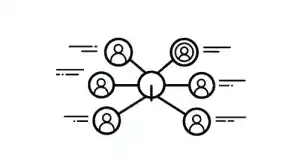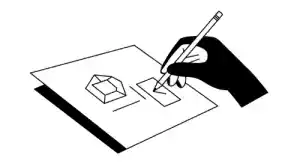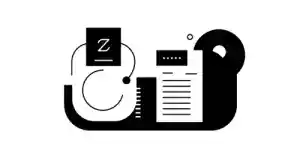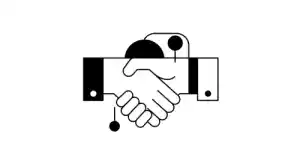Brand Identity Design Services
Turn Your Business Into a Brand That Dominates.
Stop competing on price. We build comprehensive identity systems—strategy, visuals, and voice—that position UK businesses as market leaders and justify premium pricing.
Our Comprehensive Brand Identity Services

Brand Strategy: The Blueprint for Profit.
Design without strategy is just decoration. Before we draw a single line, we define exactly who you are, who you serve, and why you matter. We build a strategic roadmap that ensures your brand not only looks good, but also converts the right customers for the right reasons.
Build Your Strategy
Visual Identity: The “Trust” Trigger.
Your visual identity is your silent ambassador. We move beyond simple logos to create a complete visual ecosystem—colour palettes, typography, and imagery styles—that communicate “Market Leader” before you even say a word.
Develop Your Look
Rebranding: Evolve or Expire.
Outdated branding is an invisible tax on your revenue. If your visual identity appears to be stuck in 2010, customers will assume your service is too. We revitalise established businesses, retaining your hard-earned equity while sharpening your image for the modern market.
Revitalise Your Image
Corporate Branding: Scalability & Consistency.
As you scale, consistency becomes your most valuable asset. We help large organisations unify their brand architecture and visuals across departments and territories, ensuring that your brand equity grows with every new hire and every new office.
Scale Your IdentityA Brand is Not a Logo. It’s a Reputation.
A strong brand identity is your greatest asset for winning and retaining customers. It’s the dedicated effort of researching, defining, and building your unique story that translates into tangible value. After all, your brand isn't just a logo; it's the core promise you deliver, shaping perception and driving choice.
Any freelancer can sell you a logo for £50. We sell you the ability to charge what you are worth.
Choosing Inkbot Design for your brand identity offers more than just striking visuals; it delivers strategic advantages:
- Premium Positioning: Stop Fighting for the Bottom of the Market. Look expensive, and clients will pay you accordingly.
- Customer Loyalty: People buy products, but they join tribes. We build brands that create emotional switching costs for your customers.
- Increased Valuation: A strong brand is an asset on your balance sheet. Whether you plan to sell in 5 years or 50, branding increases your multiple.
Ready to build a brand that truly performs? Let's talk.
Let's Discuss Your Brand Vision
Share a few details, and let our 20+ years of branding expertise guide you towards impactful results.

We Help Businesses Like Yours Thrive
★ ★ ★ ★ ★
“Working with Inkbot Design was a superb experience – professional, supportive, and insightful. Their creativity delivered a logo that's powerfully established our brand identity on social media. For dependable and creative brand work, look no further. We wholeheartedly recommend Inkbot Design.”

★ ★ ★ ★ ★
“Choosing Inkbot Design for our Brand Identity was an excellent investment. They are inventive, reliable, accessible, and exceptionally thoughtful. Even when I wasn't entirely sure what I wanted, their team expertly listened, grasped the core concepts, and skilfully guided the process to uncover what was truly important. Don't hesitate – bring them on board!”

The ROI of Branding: By The Numbers
Branding isn't a vanity expense. It is a performance multiplier. Here is why the world’s fastest-growing companies obsess over their identity:
- 82% of Investors cite brand strength as a key factor in their funding decisions.
- 90% of Purchasing Decisions are subconscious. If your brand doesn't “feel” right, you lose the sale before you even pitch.
- Premium Pricing Power: Consistent branding increases revenue by up to 23% by justifying higher price points (Marq).
Your brand is your promise, your reputation, and your most powerful asset in driving growth.
FAQs About Brand Identity Design
What is the difference between a Logo and a Brand Identity?
Think of it this way: A logo is the tip of the iceberg. It's a single mark. Brand Identity is everything below the surface that gives that mark weight and meaning. It includes your typography, colour psychology, tone of voice, photography style, and the strategic rules for how your business communicates. A logo identifies you; a brand identity positions you. If you want a symbol, buy a logo. To establish market authority, invest in your identity.
Why should I invest £3,000+ when I can get a logo for £50?
Because a £50 logo usually looks like a £50 logo. Cheap design is often generic, template-based, and legally risky (you can't trademark clip art). We build bespoke assets rooted in consumer psychology and market research. Our clients invest in branding not as an expense, but as a lever to increase their own prices. If a professional brand allows you to charge 20% more for your services, the investment pays for itself very quickly.
I already have a logo. Can you just build the identity around it?
We can, but we must audit it first. If your current logo has strong equity and recognition, we can “retro-fit” a modern identity system around it to refresh your look without losing your heritage. However, if the foundation is weak or dated, building a house on top of it is a waste of money. We will give you an honest assessment during our consultation.
What exactly do I receive at the end of the project?
You don't just get a folder of JPEGs. You receive a comprehensive Brand Identity System. This typically includes:
Primary & Secondary Logos: For every application (web, print, social).
The “Brand Bible” (Guidelines): A detailed manual instructing your team/vendors on how to use fonts, colours, and layout to ensure consistency.
Brand Assets: Patterns, icons, and social media templates.
Stationery Designs: Business cards, letterheads, and comp slips ready for print.
How long does a Brand Identity project take?
Quality strategy cannot be rushed. A typical identity project takes 4–8 weeks.
Weeks 1-2: Discovery, Research & Strategy.
Weeks 3-4: Concept Development & Design.
Weeks 5-6: Refinement & Iteration.
Weeks 7-8: Finalisation & Guidelines Delivery. If you have a critical launch date, please notify us in advance so we can assess its feasibility.
Do you handle the strategy or just the visuals?
Design without strategy is just decoration. We are a strategic agency. Before we draw a single line, we define your market positioning, your ideal customer avatar, and your brand archetypes. The visuals we create are not just “pretty”; they are engineered to trigger specific emotional responses in your target audience to drive sales.
What if I don't like the initial concepts?
This is a common fear, but it rarely happens in practice. Why? Because we don't guess. Our rigorous discovery phase aligns our vision with yours before design begins. However, to put your mind at ease, our packages include structured revision rounds. If we fall short, we listen to your feedback and refine the concepts until they align perfectly with your commercial objectives.
Do I own the copyright to my brand?
100%. Upon final payment, full intellectual property rights transfer to you. You are free to trademark, modify, and use your assets globally. We retain a non-exclusive right to display the work in our portfolio, showcasing what we built together to the world.
Can you help me roll out the new brand?
Absolutely. A brand only works if it is implemented correctly. We can assist with Website Design, Marketing Collateral, Packaging, and Signage to ensure your launch is seamless. We also offer print management services, which means we handle the technical liaison with printers to ensure your business cards look as premium as they feel.
I'm ready to scale. What is the first step?
Stop blending in. Click the “Request a Quote” button and tell us about your business goals. We will review your enquiry and send you a custom proposal and project roadmap within 24 business hours. No hard sales, just a clear path to a better brand.
